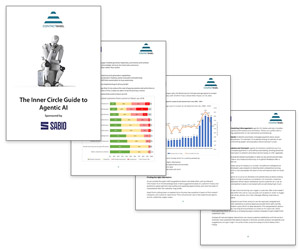Our panel of experts discuss the ways in which you may be misusing contact centre reporting.
1. Don’t let inbound abandoned call rates mislead you
When you are calculating abandoned call rates, you should ensure that the threshold is not too long so that it also excludes legitimate abandons, as well as misdials and wrong numbers. The industry standard threshold is five seconds, so if your call centre’s is higher than this, your abandoned call rate may be too low.
Conversely, if you measure abandon rates via IVR, they could be too high. If you do not measure IVR recordings appropriately and a customer hangs up as they have used the self-service process to resolve their enquiry, then this should be considered a success, rather than another abandoned call.
[Editor’s note: There is a good article on How to Measure Call Abandon Rate]
2. Stop obsessing over Average Handling Time (AHT)
Whilst measuring AHT may be important for the call centre, so you can determine how many call centre advisors you need at any given time, for example, it is not in the best interest of the customer. If your advisors are too concerned about ending the call so that they can be sure of meeting their KPIs, then they may not be providing great customer service, which may lead to multiple calls.
Instead, you should prioritise First Call Resolution, so your advisors feel comfortable with spending a little more time on the call. This increases the likelihood of your customers being happy and therefore loyal.
3. Loosen your grip on unachievable advisor occupancy rates
If your advisors are constantly working at a high rate of utilisation, they will likely be prone to burn-out, leading to high staff attrition rates.
Instead, you should ensure that you monitor occupancy rates and give your advisors enough time to collect their thoughts. Also, periods off the phone for training and other opportunities to control different channels will help to make sure that you are not pushing your advisors too hard and will add variety to the job’s routine.
With thanks to Martyn King at Nexbridge
4. Don’t ignore digital
With 60% of your customers now starting their engagement online, it is important to consider the demand that’s being created through your Digital Front Door. To do so, you should provide a real-time and historical analysis of all this activity, taking into account both people on the website as well as those queuing to speak to your contact centre staff.
The aim of this activity is to get more details of the customer experience and another useful reporting measure that you can use to do so would be to calculate the number of calls handled that day because of customers falling out of their web journey. Contact centres should then share this information with their web team.
5. Don’t ignore the data that you already have
There is a massive amount of data that already sits within the contact centre. This includes: how many times a customer has called, how many transfers have been made and how many calls have been put on hold for too long.
Whilst these reporting statistics are valuable individually, they can also often provide sufficient data for root-cause analysis, which can find answers as to why other metrics are too high/low. Contact centre reporting should focus in on these problems and drive their resolution.
6. Use the technology that is there to help you!
The problem with unstructured reporting data is that it’s difficult to get a handle on. That’s why contact centres really can’t keep ignoring solutions such as speech analytics that allow them to delve into their data and surface customer engagement issues that are not always immediately apparent.
However, speech analytics only really applies to the largest contact centres, right? Wrong! Speech analytics is now delivering results and promising data to call centres with as few as 100 seats.
7. Overcomplicating reported feedback can be your biggest enemy
With so much reporting data available, it can be easy to get lost. That’s why it’s imperative to focus on what is important, and data presentation and visualisation is key here.

Stuart Dorman
Think about what you are displaying on your wallboards. Do agents really need to know how many calls are in the queue? The job of an advisor is to deliver great customer service, not rush through calls to reduce the queue.
Also, don’t fall in to the trap of just measuring averages. Look for the outlier statistics; focusing on exceptions can provide a much better indicator of where you’re not meeting customer satisfaction.
With thanks to Stuart Dorman at Sabio
8. Don’t report on too many KPIs
Many contact centres are actively looking to upgrade or replace their management information (MI) systems which govern KPIs. This suggests that in many cases these systems are not giving management what they need in terms of actionable information.
However, is it the MI system or is it the effort involved in reporting on too many KPIs which inevitably slows down reporting cycle time? For example, if you measure 18 KPIs but you are only using the evidence of five to make actionable changes to the call centre, you should drop the other 13, otherwise you are merely wasting time. You should only measure what will be managed.
9. Focus on more than just an average KPI score

Mark Lockyer
A problem with some KPIs, such as Customer Effort, is that they only focus on one sole point of the bell curve and they ignore the fact that when people answer surveys to provide the data, they tend to give an extreme response.
So, you should report on the full spread of the KPIs’ bell curve and not just an average based on the median, which will likely lie in the middle of two extremes.
With thanks to Mark Lockyer at IP Integration
For a more in-depth look into call centre reporting, read our article: A Quick Guide to Call Centre Reporting – With the Top Seven Reports, Examples and Tips
Author: Robyn Coppell
Published On: 18th Jan 2017 - Last modified: 5th Oct 2022
Read more about - Technology, Abandoned Calls, Average Handling Time (AHT), Editor's Picks, IP Integration, Key Performance Indicators (KPIs), Metrics, Nexbridge, Reporting, Sabio










































The key to mistake 2 is balance! AHT is not just a number needed for calculating staffing levels, it is also an indicator of customer service.
If AHT is too short, the agent could be rushing, missing out vital info the customer needs.
If AHT is too long, they could be over informing the customer, creating confusion with too much info and wasting the customers time, which frustrates them.
Customers want a service to be quick, easy & reliable. AHT & 1st call resolution go hand in hand to provide good customer service.
The mistakes I have seen with AHT is either the targets aren’t set properly or people focus on one day instead of a whole month. Remember the A is for “Average”, a days worth of data might give you an indicator, but a months worth will give you a picture.
Excellent points about Reports. There’s ‘data’ and then there’s information.